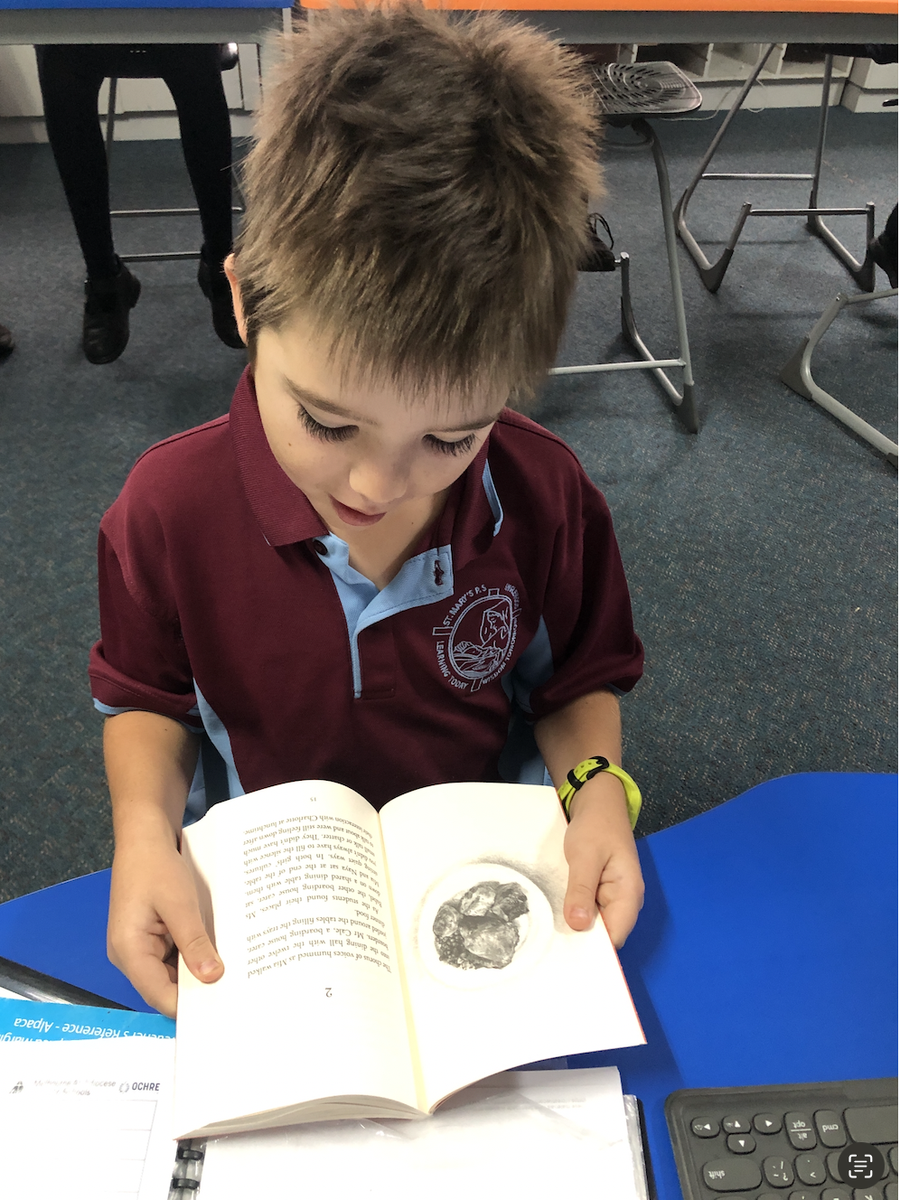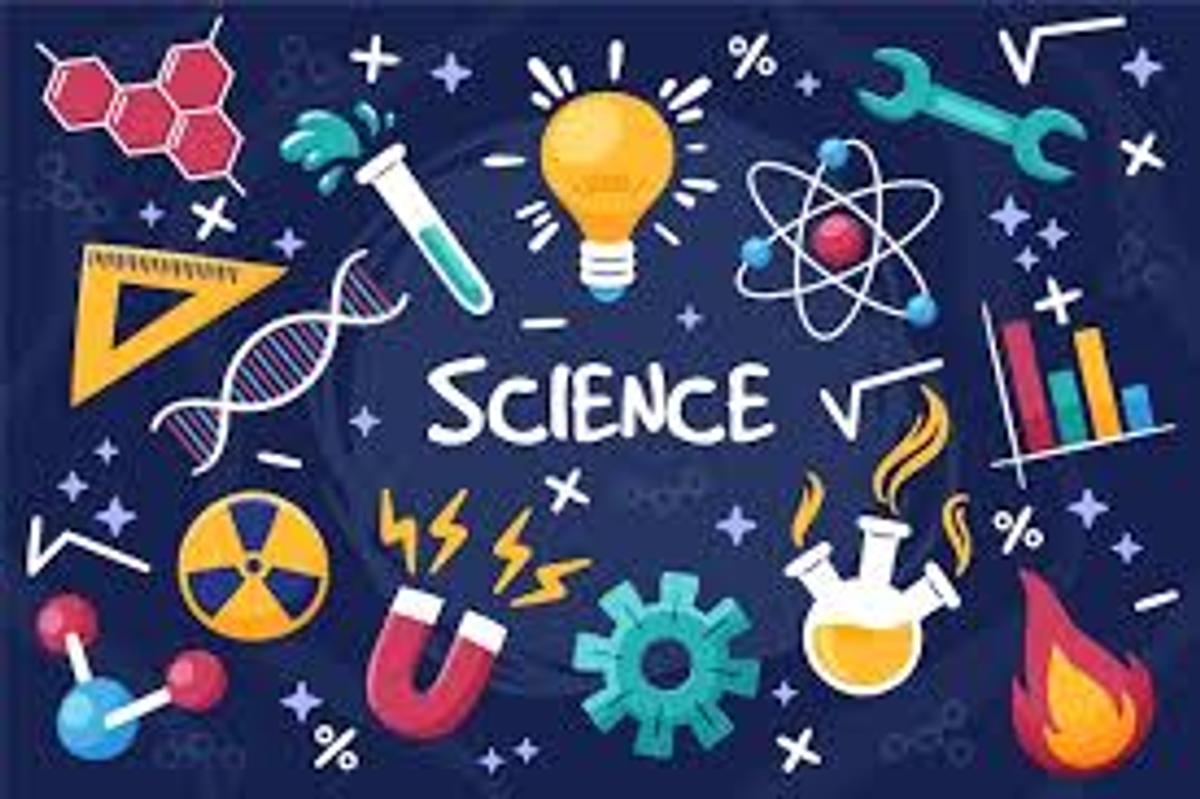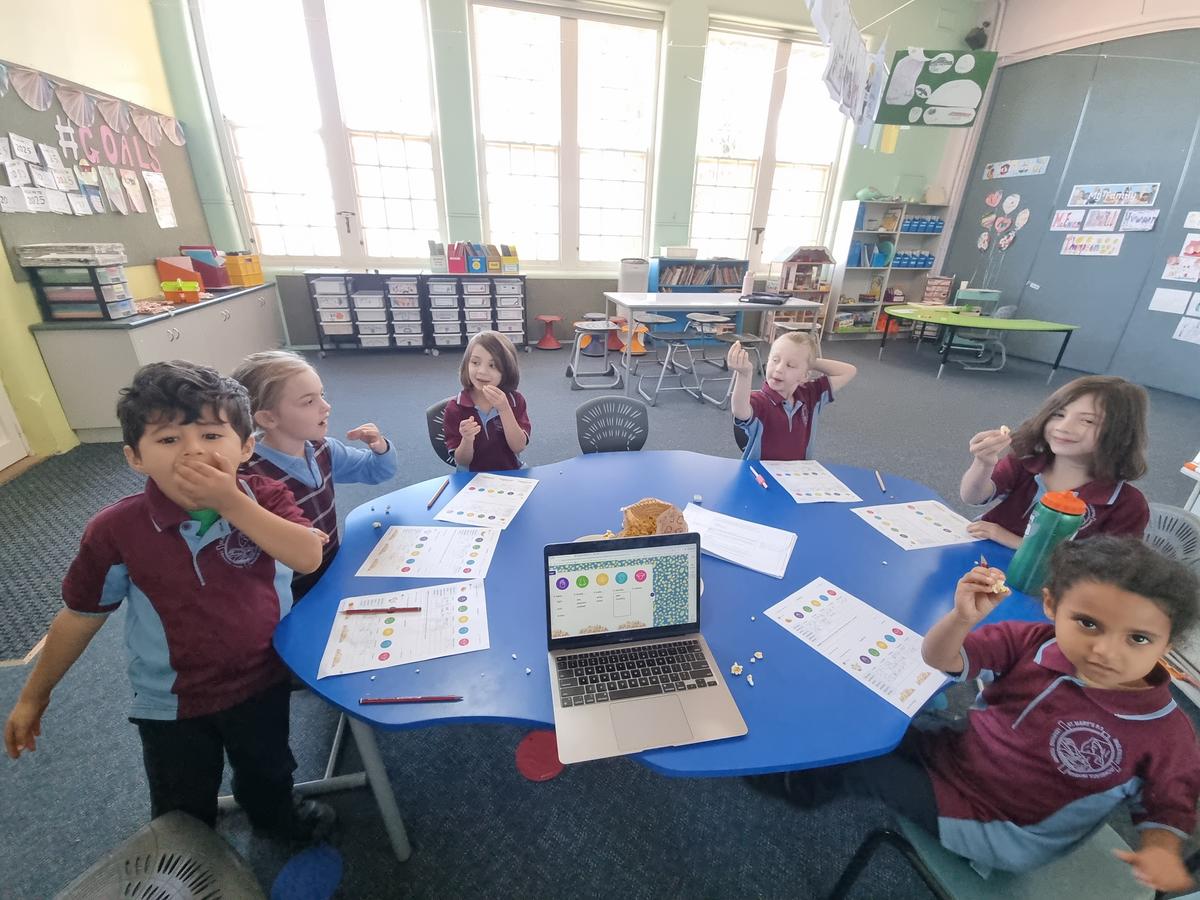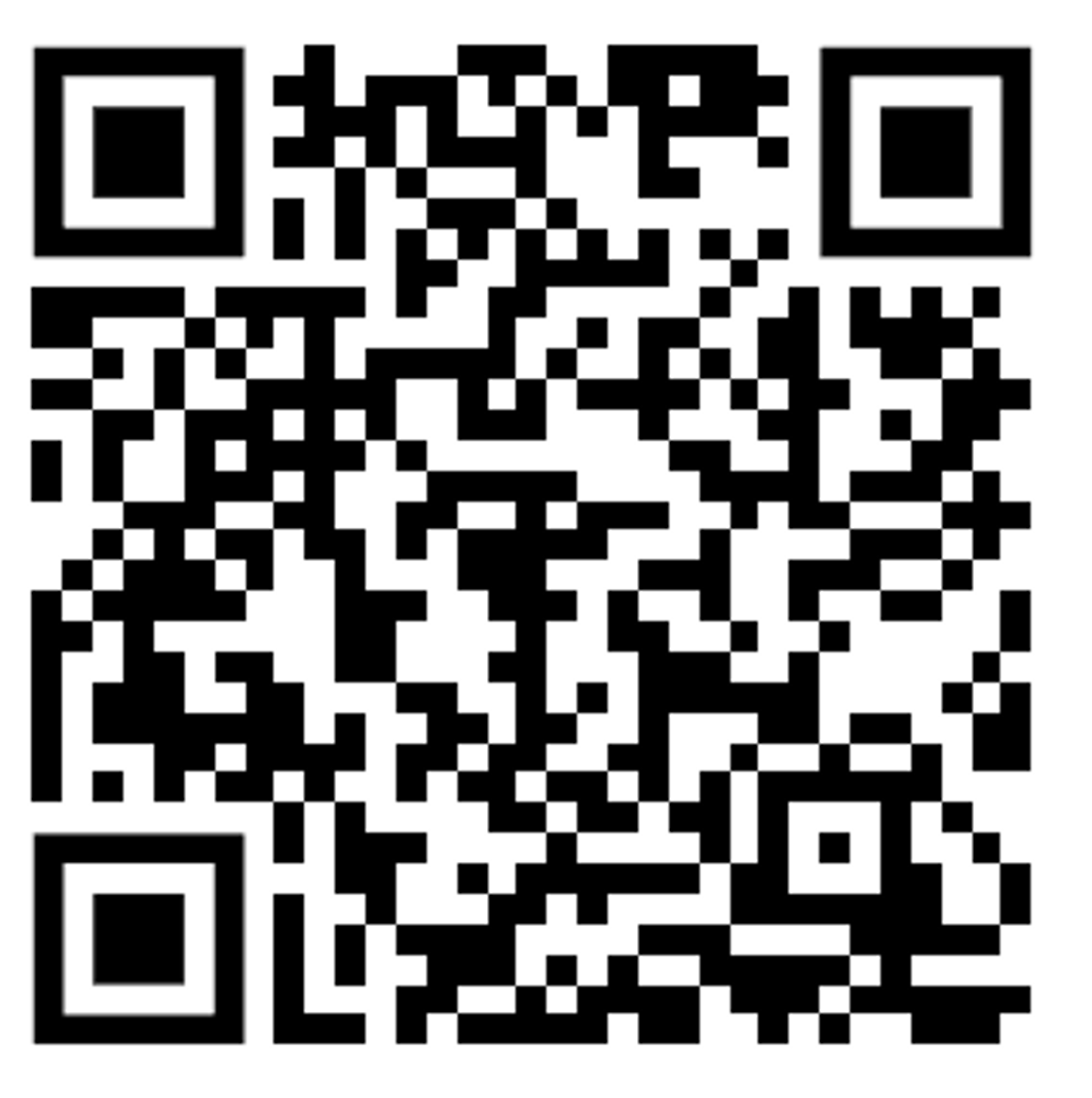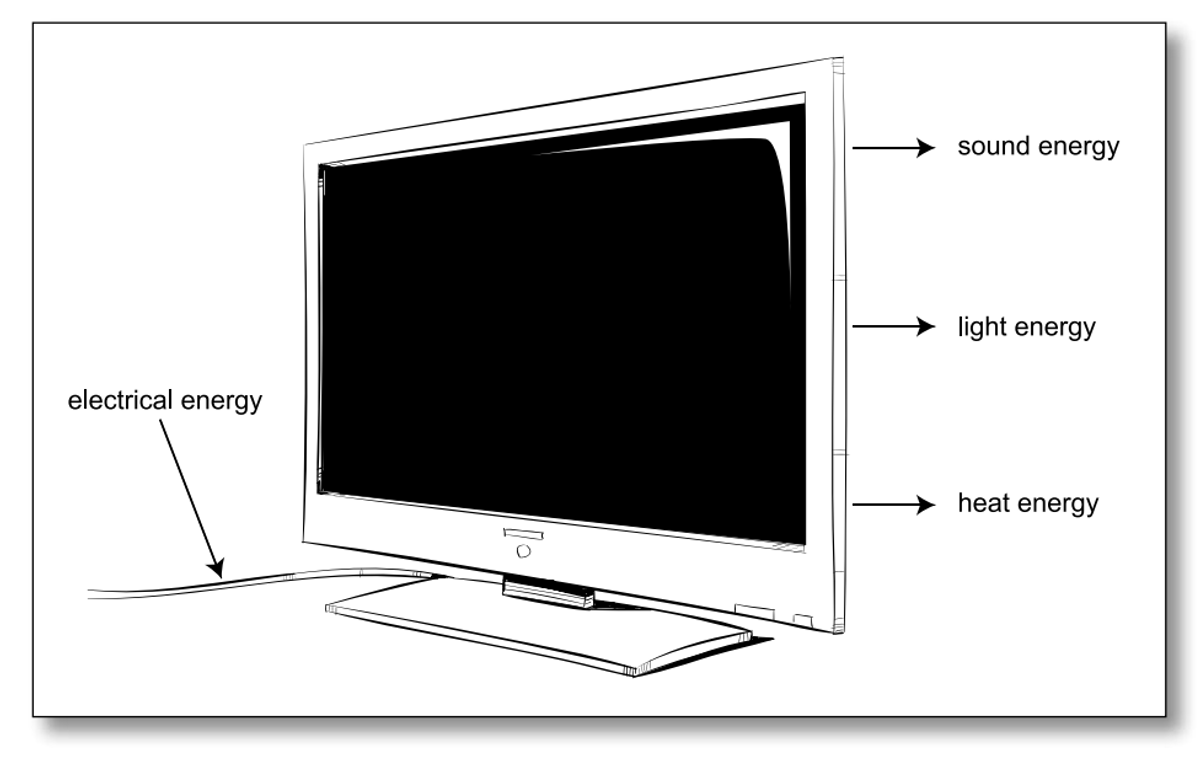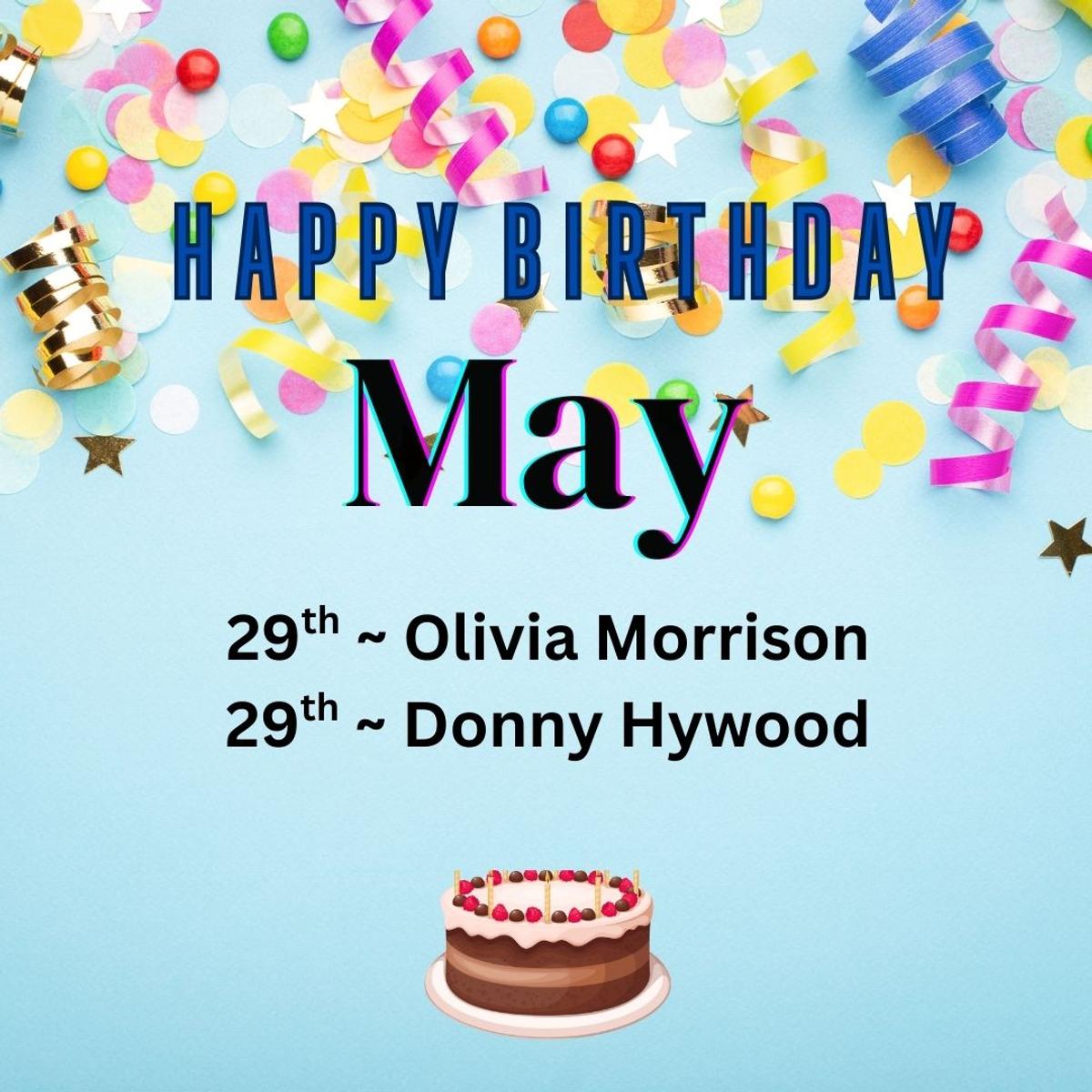Student News
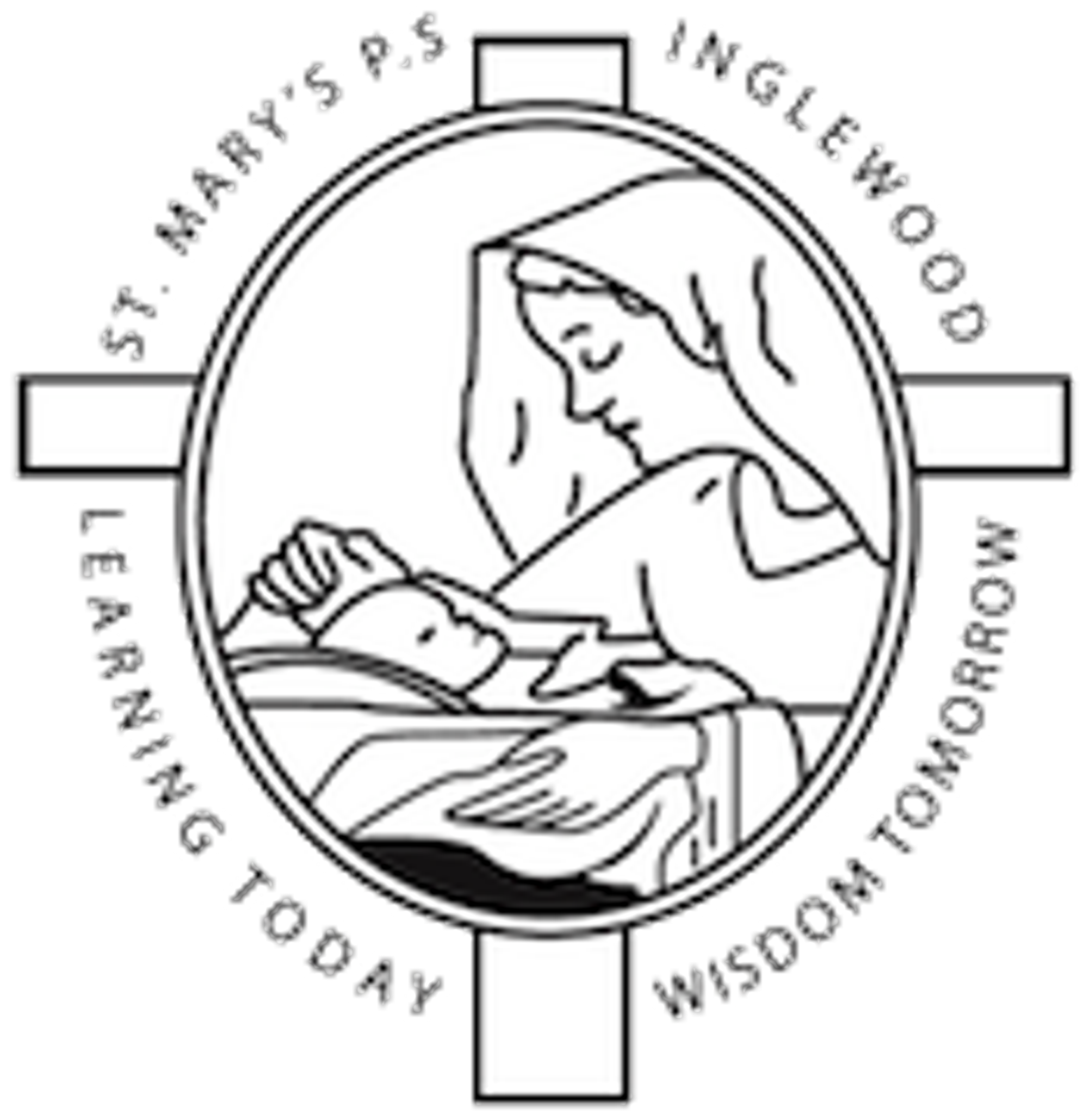
Year 3/4 OCHRE (Literacy)
Yirra has a dog, Demon, who is notoriously poorly behaved. He runs away frequently, he knocks people over, he sprays sand on people, he chases cats, and he takes things from Yirra’s house and hides them. Yirra’s family has had enough of the dog with the constant mess and stress he causes. Yirra is told that she needs to train Demon but she struggles to find someone who can do it. A boy she has a crush on at school, Matt, offers to help her as his cousin is a dog trainer. Yirra eventually gets Demon trained and is relieved to have a calm and well-behaved dog.
Literacy Year 3/4
This term, students are studying the book "Yirra and her Deadly Dog Demon".
Year 5/6 Literacy
Feature books of study this term: "The Black Cockatoo" and "Dirrarn"
Dirrarn is the sequel to Black Cockatoo, where we were first introduced to Mia as she navigated the intricacies of culture, connection to Country, and family bonds. In Dirrarn, we follow Mia's journey as she finds herself at a new boarding school, facing the challenges of living thousands of kilometers away from her home, family, and the expansive landscape she cherishes. Alongside her best friend, Naya, Mia negotiates the complexities of forging new friendships, adapting to different perspectives, and embracing a way of life in a completely unfamiliar environment where she doesn’t see herself, her people or her culture represented. Confronted with numerous challenges, Mia grapples with the unfamiliar, and must find the strength to assert her truth.
Years F-2 Science
In Science, students are using their senses to make direct observations of the classroom, school grounds and home. They are gathering information to describe and make comparisons of the sources of light, sound and heat energy and how they are sensed and produced.
Here you can see students enjoying the fruit of their labour as they investigated how their senses helped them to know when popcorn is cooked and ready to eat.
Years 3-6 Science - Request for scientific support!
Students are discussing the different forms of energy and are posing questions for investigations on how electricity is used in the home and how it is generated. In the coming weeks, they will use their Science Inquiry Skills to conduct fair tests on how machines can transform energy more efficiently.
To engage students in this unit, a Home Learning Task has been provided. Working alongside your child, we are asking families to complete an appliance audit of your household as part of their special investigation led by Ima Constable, who is from the Special Taskforce Investigating Villains with Superpowers. Ima corresponds with the students via top-secret letters and video messages. I've been lucky enough to record one of Ima's videos, which you can view below! You can also view the letter sent home with students about the audit.
Introducing the ‘Auditing appliances’ task
This term, the class is exploring energy as part of the Essential Energy unit in Science. Students are encouraged to look at what electricity is used for in the home. They are encouraged to look at appliances in and around the home and identify what the electricity is used for, such as to heat something, to make something move, or to produce light or sound. Some examples of appliances might be:
• a hot water heater
• a cooling system
• cooking appliances.
If you have past electricity bills, this might be helpful for students to see when spikes of energy usage occur in the home.
Students are asked to record the information on the resource sheet ‘Auditing appliances’, along with an estimation of how often the appliance is used in a standard week. Students are also encouraged to try to determine how many watts the appliance uses. This information is often recorded on the appliance, or they can find this information in the ‘Energy usage guide’ or online. Finally, they can use an appliance calculator to predict what the cost of the appliance is over the span of a day/week. See QR code
Students might record other information, for example:
• make a chart or booklet of drawings of appliances that use energy, and include labels and descriptions of what the machines are used for and what types of energy they require
• take photos of the appliances, and include labels and descriptions of what the appliances are used for and what types of energy they use (see below).
Students will be asked to share their observations with their classmates in Week 6.
